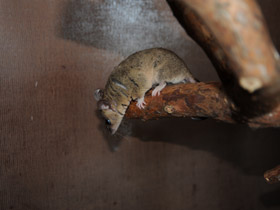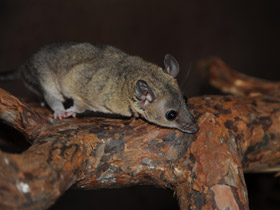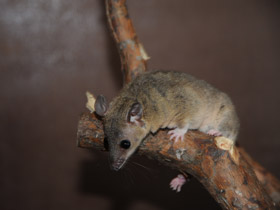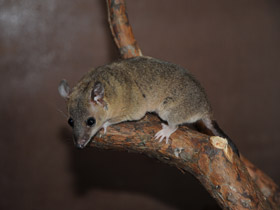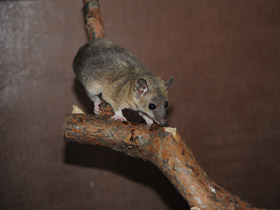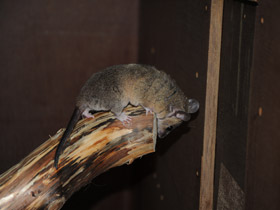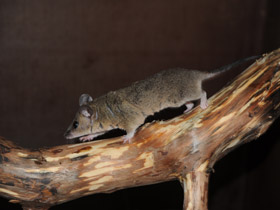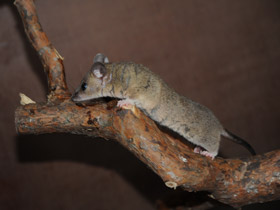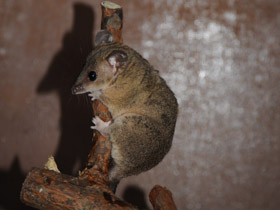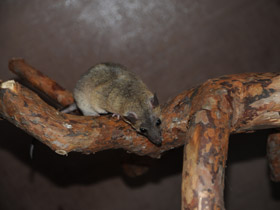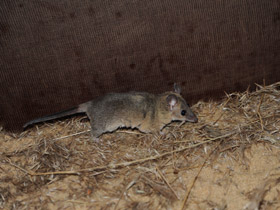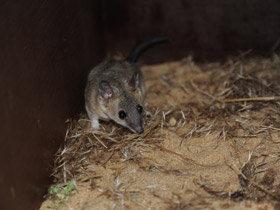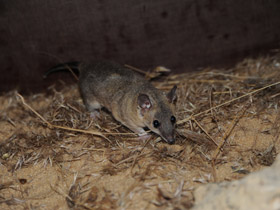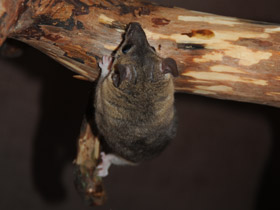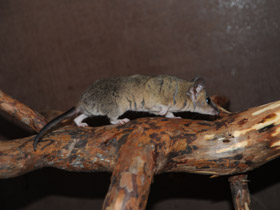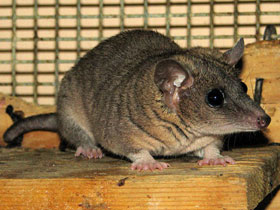The gray short-tailed opossum(Monodelphis domestica)
Short-tailed opossum видео
The gray short-tailed opossum (Monodelphis domestica) is a small South American member of the family Didelphidae. Unlike most other marsupials, the gray short-tailed opossum does not have a true pouch. The scientific name Monodelphis is derived from Greek and means "single womb" (referring to the lack of a pouch) and the Latin word domestica which means "domestic" (chosen because of the species' habit of entering human dwellings). It was the first marsupial to have its genome sequenced. The gray short-tailed opossum is used as a research model in science, and is also frequently found in the exotic pet trade. It is also known as the Brazilian opossum, rainforest opossum and in a research setting the laboratory opossum.
Monodelphis domestica is a species of marsupial didelphimorph of the family Didelphidae native to South America; it is found in central and northeastern Brazil, eastern Bolivia, western Paraguay and northern Argentina.
Appearance
Monodelphis domestica is a small animal, 10-15 cm long and weighing 80-150 g (males are considerably larger than females, and their fur is thicker and longer). It has an elongated, pointed muzzle with small convex eyes and a not very long, grasping, almost entirely hairless tail, but with fatty deposits at its base. The limbs of Monodelphis domestica are short, five-toed, with the hind limbs slightly longer than the forelimbs.
Reproduction
Female Monodelphis domestica may have up to four litters per year, gestation lasts only 14-15 days and 5-12 young are usually born. They are cared for by the female alone. Monodelphis domestica has an undeveloped nurse and the young spend a lot of time in the nest. The female only comes to warm and feed them. At 4 weeks of age, the young are able to move on their own, and reach sexual maturity at 4 to 5 months of age.
Nutrition
The diet of Monodelphis domestica consists of insects, small rodents, succulent fruits, seeds and carrion. They are happy to prey on rodents and insects in human dwellings and are often welcome guests.
Behaviour
Gray short-tailed opossums eat rodents, frogs, reptiles, and invertebrates, as well as some fruit. They hunt primarily by scent, poking their snout into vegetation in search of prey or dead animals to scavenge. Once they find living prey, they pounce onto it, holding it down with their forefeet while delivering a killing strike, often to the base of the neck, with their sharp teeth. They can successfully take prey up to their own size.
They are nocturnal, being most active in the first three hours after dusk. Although they may occasionally shelter in natural crevices in the rock, they normally spend the day in concealed nests constructed of leaves, bark, and other available materials. The nests of females are more complex and tightly woven than those of males. They are solitary, coming together only to mate, and with each individual occupying a home range of 1,200 to 1,800 m2 (13,000 to 19,000 sq ft), flagged with scent marks. The approach of another member of the species is commonly met with hissing and screeching, which may escalate to defensive strikes launched while the animal is standing on its hind legs.
Laboratory opossum
The gray short-tailed opossum possesses several features that make it an ideal research model, particularly in studies of marsupials, as well as the immunological and developmental research on mammalian systems. It breeds relatively easily in laboratory settings, and neonates are exposed and can be readily accessed because, unlike other marsupial species, female opossums lack a pouch: neonates simply cling to the teats. Opossums are born at a stage that is approximately equivalent to 13- to 15-day-old fetal rats or 40-day-old human embryos. Like other marsupials, the inadequacies of the neonate's immune system function make it an ideal model for both transplant and cancer research, as well as general investigations into immune system development and its similarities to other eutherian mammals.Its genome was sequenced and a working draft published in May 2007: the decoding work, directed by MIT and Harvard, reveals the opossum to have between 18,000 and 20,000 protein-coding genes. The full genome sequence and annotation can be found on the Ensembl Genome Browser.

















